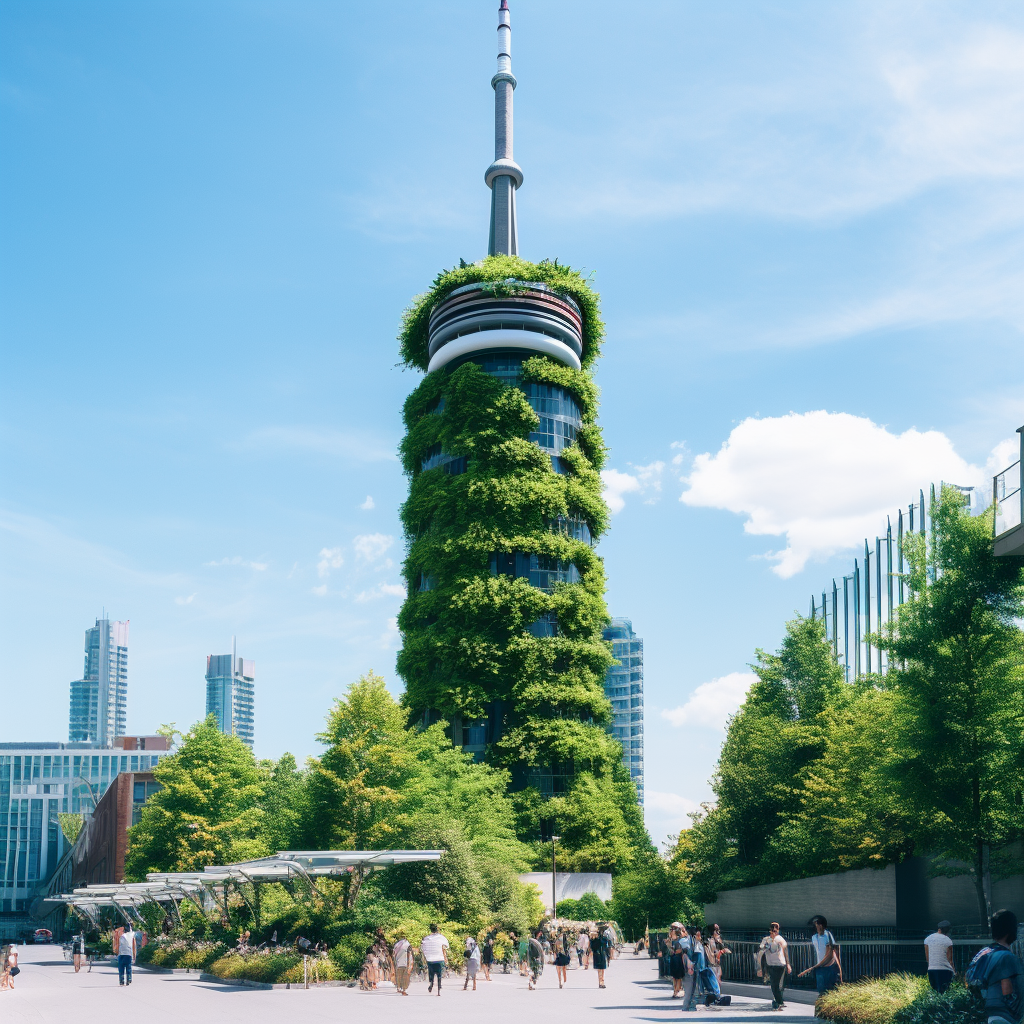Whilst climate change is at the forefront of most countries’ consciences, the issue is highly pressing here in Canada where we experience climate change at twice the world’s average due to our northerly location. Do you believe in the stated extreme effects of climate change or do you believe in a milder alternative? We would love to hear your thoughts in the comment section at the bottom of this article.
With this in mind, our friends at BonusFinder Canada utilized technology to predict exactly what Canada’s most popular tourist spots could look like in 100 years time if we do not intervene and try to combat climate change. To do so, they asked OpenAI to write predictions for five top tourist hotspots (Niagara Falls, CN Tower, Notre-Dame Basilica, Hopewell Rocks, Confederation Bridge) based on factors such as global warming, overpopulation and extreme weather, and used these descriptions to generate AI images.
Niagara Falls – no intervention

Niagara Falls – positive intervention

Key changes without intervention:
● Significant reduction in water flow, affecting local ecosystems and the availability of freshwater resources.
● The falls are no longer safe to get close to due to erosion.
● The once lush surroundings have been replaced by concrete and pollution due to overpopulation.
CN Tower – no intervention

CN Tower – positive intervention

Key changes without intervention:
● Toronto is now largely inhospitable due to global warming and extreme weather events.
● Fires are not uncommon due to global warming and an abundance of refuse.
● Toronto faces major impacts of climate change, including higher temperatures, reduced air quality, and persistent heatwaves.
Notre-Dame Basilica – no intervention

Notre-Dame Basilica – positive intervention

Key changes without intervention:
● Extreme weather events, including severe heatwaves, have damaged the Basilica’s exterior and interior.
● The area surrounding the Basilica is overpopulated and increasingly inhospitable.
● The basilica remains heavily reliant on non-renewable energy sources, worsening the effects on the environment.
Hopewell Rocks – no intervention

Hopewell Rocks – positive intervention

Key changes without intervention:
● The main structure of the rocks has collapsed.
● The surrounding area is heavily urbanized and polluted.
● The beach is now dangerous, marshy and overgrown, but still attracts many tourists when the bay is uncovered, bringing further pollution and structural damage with each passing year.
Confederation Bridge – no intervention

Confederation Bridge – positive intervention

Key changes without intervention:
● Confederation Bridge has collapsed in areas, rendering the huge structure unusable.
● The water around the bridge is now full of concrete, industrial waste, pollution and urban runoff.
● Small portions of the bridge still stand in the water, serving as a reminder of our failure to act and combat urbanization and overpopulation.
For the Silo, Clara Tan.


Leave a Reply
You must be logged in to post a comment.